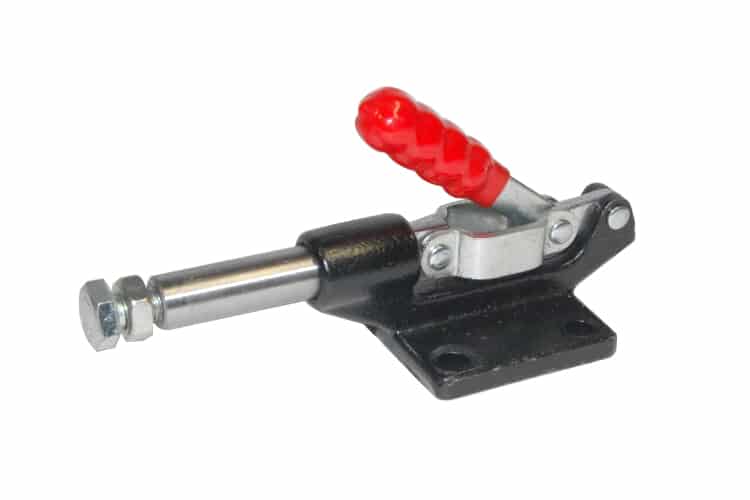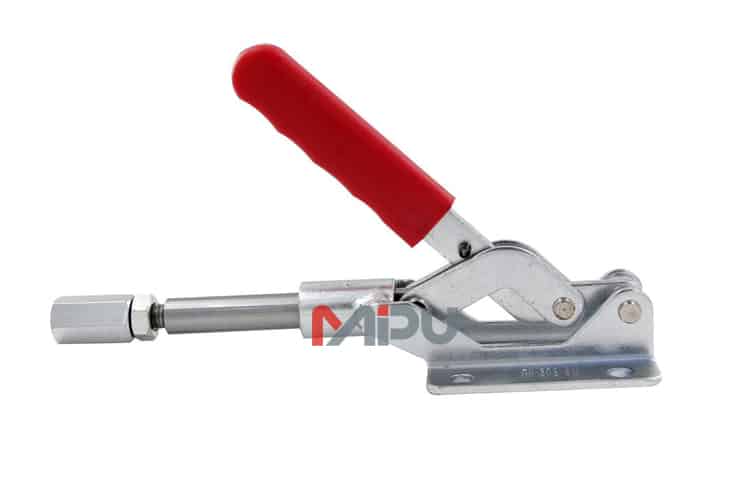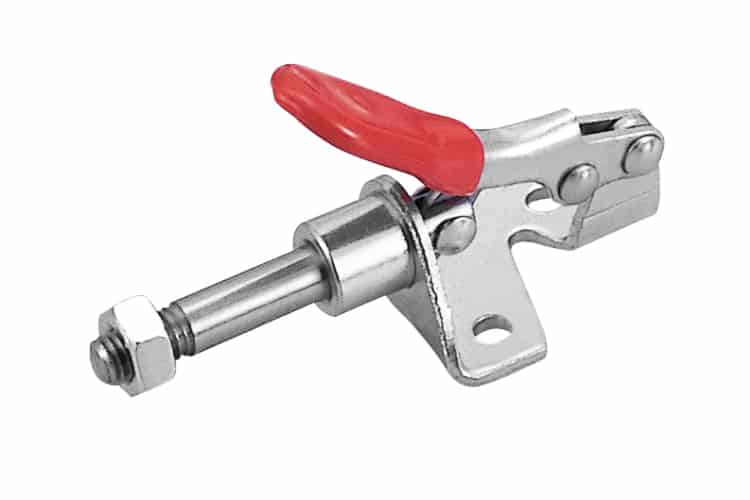In the vast world of mechanical tools, toggle clamps stand out for their versatility and efficiency in holding workpieces. Given their importance in diverse operations, having them fine-tuned to your specific needs is pivotal.
Adjusting toggle clamps involves understanding their mechanism, which includes the interplay between their handle, clamping arm, and base. Various components such as the handle angle, clamping arm tension, base alignment, spring tension, holding capacity, spindle positioning, and regular calibration play crucial roles in fine-tuning the tool. To ensure optimal performance, these adjustments must be meticulously executed while keeping in mind the specific requirements of the task at hand.
With the right guidelines and a touch of patience, mastering the art of adjusting toggle clamps can elevate the precision and efficiency of your tasks. Let’s explore how.

Understanding the Mechanism
The foundation of any adjustment lies in understanding the tool’s mechanism. Toggle clamps operate based on a system of levers and pivot points.
Delving deeper, the relationship between the handle, the clamping arm, and the base is critical. By comprehending how each component interacts, one can pinpoint the necessary adjustments for desired results.
Handle Adjustments
The handle is not just a point of manual interaction but plays a pivotal role in determining the clamping pressure. By modifying the handle’s angle and position, users can tailor the applied pressure to match their requirements.
While some might prefer a stiffer handle motion, others might opt for a smoother, more effortless interaction. Adjusting the handle appropriately can cater to both these preferences seamlessly.

Clamping Arm Modifications
The clamping arm, responsible for holding the workpiece, requires meticulous adjustments. Its length, angle, and tension play significant roles in the clamp’s effectiveness.
By ensuring that the arm is neither too tight nor too loose, and aligns perfectly with the workpiece, users can guarantee precision in their operations. Any misalignment can be rectified by fine-tuning the arm’s position and tension.
Base Adjustments
The base, often overlooked, is integral for stability. Ensuring it is firmly anchored and level can make a world of difference.
By checking the base’s alignment and making necessary adjustments, one can eliminate wobbles or tilts, ensuring the toggle clamp operates seamlessly.

Spring Tension
The spring within the toggle clamp determines the return force. If it’s too tight or too slack, it can affect the clamp’s overall efficiency.
By adjusting the spring tension to a balanced level, users can ensure the toggle clamp reverts to its original position smoothly post-operation.
Adjusting Holding Capacity
Each toggle clamp comes with a predefined holding capacity. However, certain tasks might demand a modification to this capacity.
By tweaking the relevant components, one can modify the holding capacity to align with their specific requirements, ensuring the clamp securely fastens the workpiece.
Spindle Adjustments
The spindle, the point of contact with the workpiece, can be adjusted for depth and angle. Such adjustments ensure that the workpiece is held without any damage or undue pressure.
By rotating or repositioning the spindle, one can achieve the desired depth and angle, ensuring the workpiece remains unscathed during operations.
Regular Calibration
After making all the adjustments, calibration ensures that the toggle clamp functions optimally. It’s a process of validating and fine-tuning the adjustments, ensuring they align with the desired outcomes.
Through calibration, any minor deviations post-adjustments can be detected and rectified, ensuring the toggle clamp operates with unmatched precision.
Conclusion
Adjusting toggle clamps might seem daunting, but with a structured approach and a deep understanding of the tool, it becomes a straightforward task. The key is to understand each component, its role, and how it interacts with other parts. With these adjustments, the toggle clamp can be tailored to cater to specific requirements, ensuring optimal performance across varied operations.
For those seeking top-tier toggle clamps, MAILONG stands as an industry leader. With an extensive product range ready for dispatch, we ensure timely deliveries without compromising on quality. Feel free to get in touch with us for a competitive quotation.
You might also be interested:
